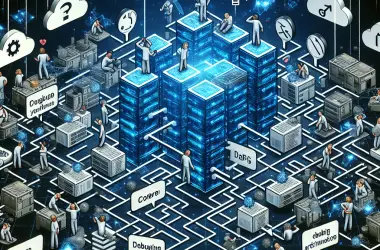Reverse Engineering and Its Impact on Consumer Rights

Reverse engineering is a process of studying and reverse engineering a complex system by reverse engineering its components and their interactions. This technique is used in various fields, including software engineering, hardware engineering, and manufacturing.

In the context of consumer rights, reverse engineering can be used to:

- 1. Identify security vulnerabilities: By reverse engineering a product, researchers can identify potential security vulnerabilities that could be exploited by attackers.
- 2. Promote innovation: Reverse engineering can be used to learn from existing products and develop new and innovative solutions.
- 3. Repair products: Reverse engineering can be used to repair or maintain products that are no longer supported by the manufacturer, extending the lifespan of products and promoting a more sustainable approach to manufacturing.
Reverse engineering can also be used to:
- 4. Encourage inter-operation: By reverse engineering a product, third-party developers can create products that are compatible with that product, which can benefit consumers by providing a wider range of choices and a more competitive marketplace.
- 5. Foster innovation: Reverse engineering can help foster innovation by allowing developers to learn from existing products and to develop new products that improve upon them, which can lead to new and innovative products that are more beneficial for consumers.
However, reverse engineering can also have negative implications for consumer rights:
- 1. Intellectual property rights: Reverse engineering can be used to copy or duplicate products, which can harm intellectual property rights.
- 2. Copyright claims: Copying or duplicating products that are protected by copyright may lead to copyright claims against the reverse engineers.
- 3. Liability: Reverse engineers may be held liable for any damages or losses caused by the reverse-engineering process or the use of the resulting reverse-engineering information.
- 4. Antitrust concerns: Reverse engineering could be considered an anti-competitive practice if used to gain an unfair advantage over the original product manufacturer, which could limit consumer choice and increase prices.
Conclusion
Reverse engineering can significantly impact consumer rights, positively and adversely. As reverse engineering techniques continue to advance, lawmakers will need to create appropriate laws that balance the rights of consumers with the rights of companies to protect their intellectual property.
To ensure that reverse engineering benefits consumers, it is crucial to establish regulations and legal frameworks that protect the rights of consumers and companies while promoting innovation and technological development without hindering the progress of the business world. Striking a balance among these considerations is vital to maximize the benefits of reverse engineering while minimizing its negative effects.


Thank you for the informative article. I found it very helpful. I am particularly interested in the potential for reverse engineering to help consumers repair their own products. This is a very important issue, as the cost of repairs can be a significant burden for many people.
This article is nothing but corporate propaganda. Reverse engineering is a threat to innovation. It allows companies to steal the intellectual property of others. We need to protect our intellectual property rights.
Reverse engineering is a valuable tool for consumers. It allows us to understand how products work and to make informed decisions about which products to buy. It also allows us to repair our own products, which can save us money.
The author of this article fails to consider the negative consequences of reverse engineering. Reverse engineering can be used to create knock-off products, which can infringe on the intellectual property rights of the original manufacturers. This can lead to lost revenue and jobs for the original manufacturers.
Of course the author of this article would support reverse engineering. It’s in the best interests of his company. But what about the consumers? Reverse engineering can lead to cheaper products, but it can also lead to lower quality products.
Reverse engineering is a great way to save money on repairs. But don’t expect the manufacturers to be happy about it. They want you to buy new products, not fix your old ones.
Reverse engineering is like a magic trick. You take apart a product, and then you can make it work again. It’s like having a superpower.
Reverse engineering can be used to do more than just repair products. It can also be used to improve products and to create new products. This can lead to new and innovative products that benefit consumers.
The author of this article argues that reverse engineering is a positive thing for consumers. However, I believe that the negative consequences of reverse engineering outweigh the positive consequences. Reverse engineering can lead to lost revenue and jobs for the original manufacturers.
Reverse engineering is like a double-edged sword. It can be used to do good or to do evil. It’s up to us to decide how we use it.